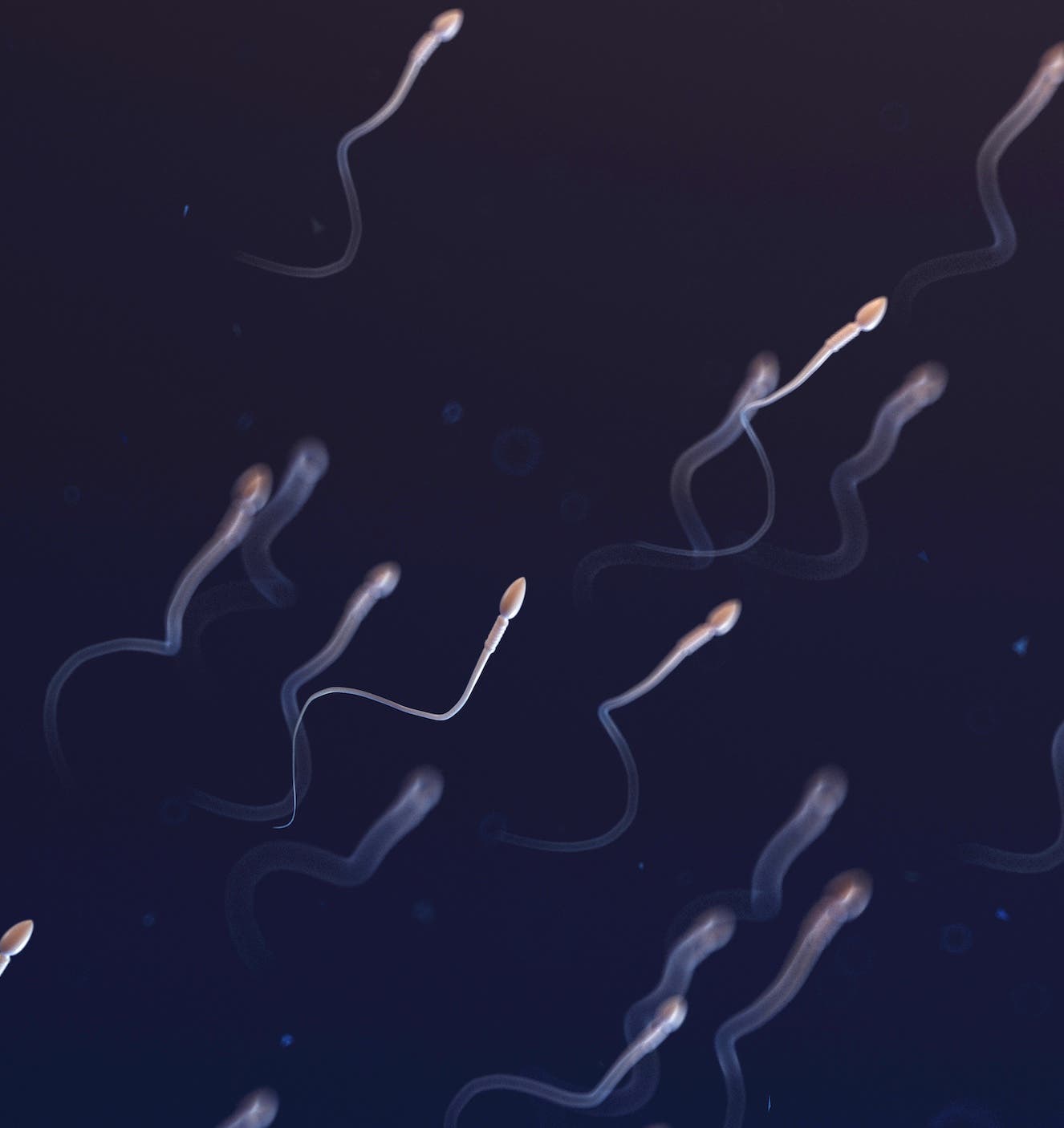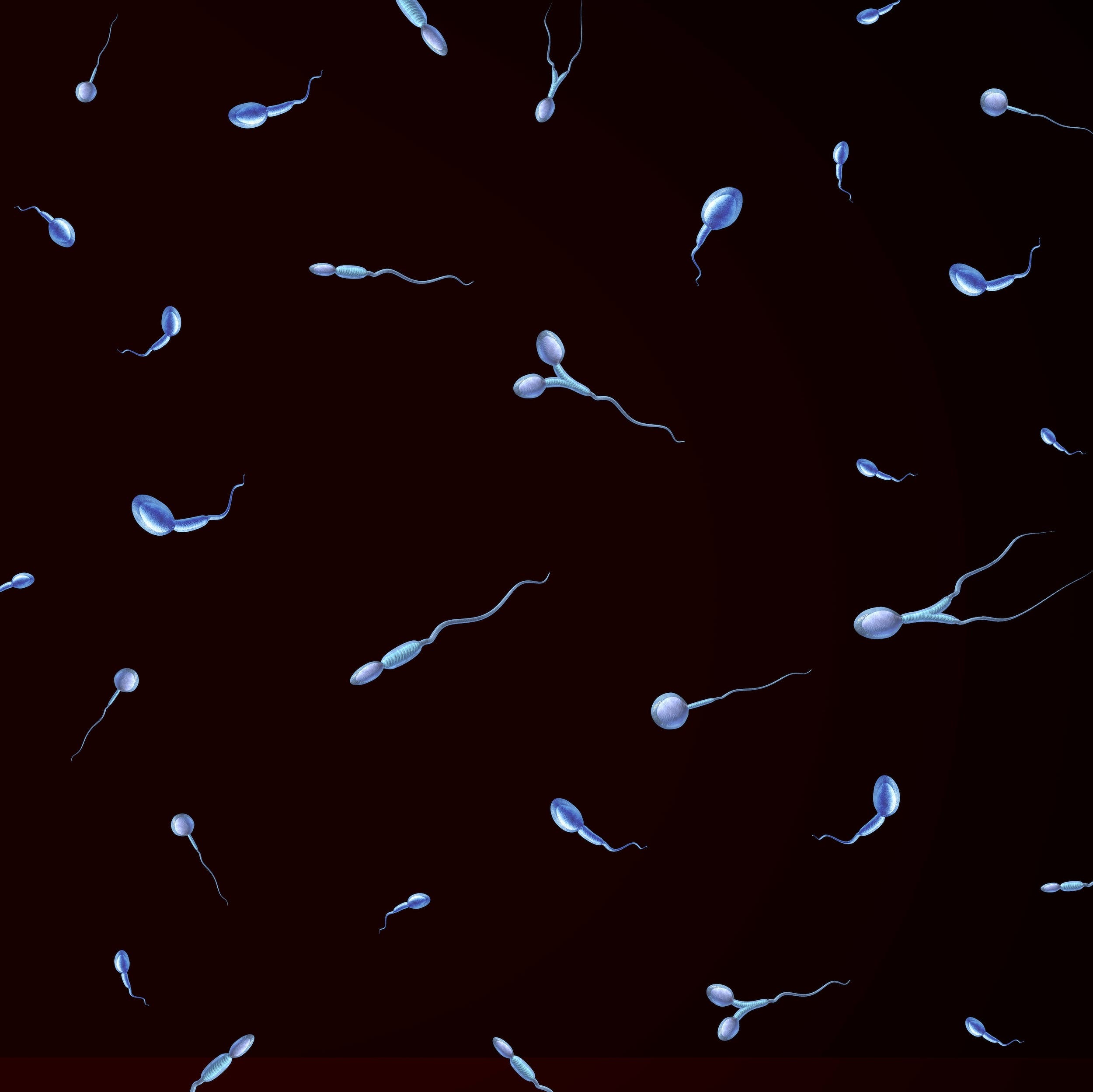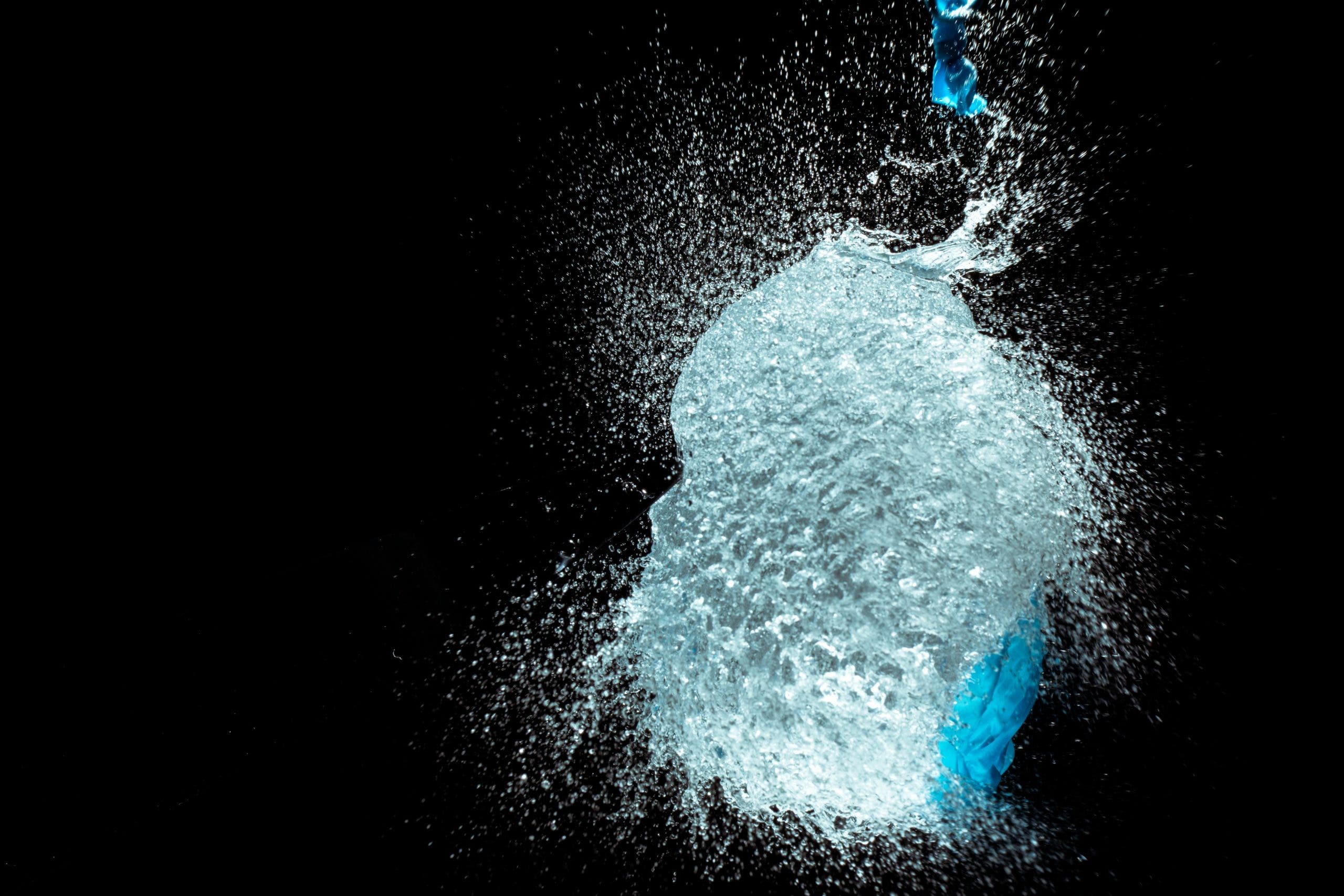The sex hormone testosterone plays a key role in everything from sexual development to muscle growth, mood, and fertility in men. Recent research found that testosterone is declining among young men — the study confirmed a drop in average testosterone levels among men under 40 over the last 20 years. Let’s take a look at the research, the potential reasons why testosterone levels are dropping in males, and what this could mean for men’s health and fertility.
Key takeaways
- A 2021 study of over 4,000 men identified a nearly 25% decrease in average total testosterone levels among young men ages 15–40.
- Testosterone plays many important roles in the body, from affecting sexual development and sex drive to impacting sperm production, bone density, and mood.
- Environmental factors, lifestyle habits, and other variables may contribute to decreasing testosterone levels, lower sperm counts, and reduced fertility worldwide
The role of testosterone in the male body
The sex hormone testosterone is produced in the testicles and plays many essential roles in the male body. Testosterone is directly involved in:
- Sexual development, such as testicular descent and enlargement of the penis
- Spermatogenesis (sperm production)
- Characteristics traditionally associated with males, like muscle growth, male hair patterns, and a deep voice
- Sex drive
- Bone density
- Body fat
- Mood
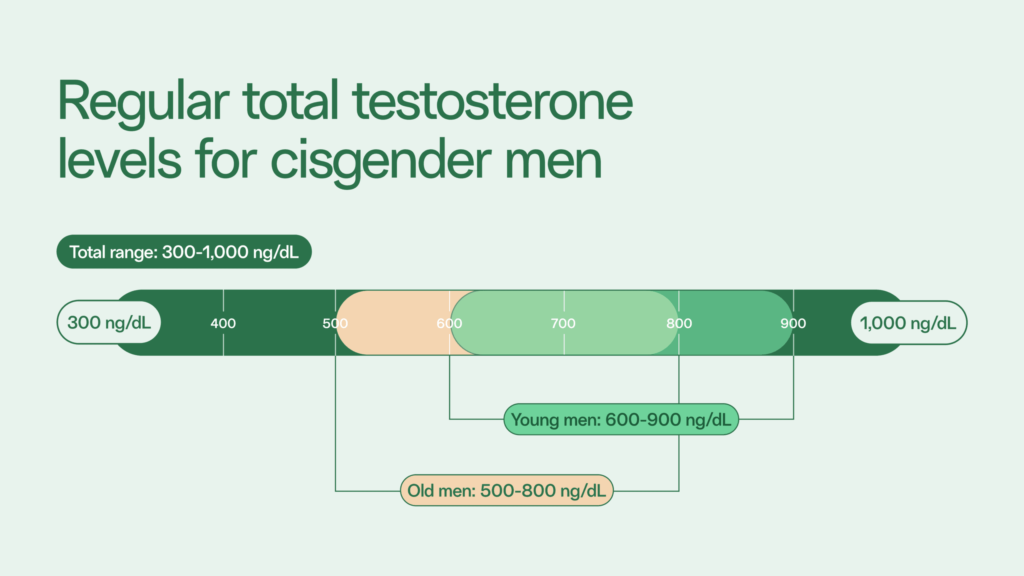
Generally, cisgender men have testosterone levels between 300 ng/dL and 1,000 ng/dL. Young adults are typically at the higher end of this range, with testosterone levels usually between 600 and 900 ng/dL, while older adults tend to have lower testosterone levels of around 500 to 800 ng/dL.
Low testosterone levels can negatively affect many areas of health, including sex drive, erectile dysfunction, and sperm production. It may also lead to reduced bone mass, weight gain or inability to gain muscle, depression, and difficulty concentrating.
Research shows average testosterone levels are dropping among young men
It’s natural for testosterone to decline with age. However, a study published in 2021 found that, over a 17-year period, the average testosterone levels among young men are also on the decline. The study, “Decline in Serum Testosterone Levels Among Adolescent and Young Adult Men in the USA,” investigated total testosterone levels among adolescent and young adult males in the US between 1999 and 2016.1
Previous research has highlighted falling testosterone levels in the population as a whole. A study from 2007 concluded that testosterone levels 100 years ago — in men born in the 1920s — were higher than those in men born in the 1960s.2
However, researchers noted that, until the 2021 study, there was a lack of information about trends in testosterone levels among young adults specifically. This study confirmed that average total testosterone levels also declined over time in this group.
How the study was conducted
The 2021 study examined data from the National Health and Nutrition Examination Surveys (NHANES), which are conducted by the Centers for Disease Control and Prevention (CDC). The surveys looked at total testosterone levels for 4,045 men aged 15 to 40 between 1999 and 2016.
The authors also considered potentially confounding factors, like age, body mass index (BMI), alcohol use, smoking habits, and physical activity levels when evaluating testosterone levels.
What the researchers found about testosterone decline
The study found that total testosterone levels were lower in men measured between 2011 and 2016, compared to those measured between 1999 and 2000. Average testosterone levels decreased from 605.39 ng/dL in 1999 to 2000 to 451.22 ng/dL in 2015 to 2016, a drop of about 25%.
Average BMI also rose over time, from 25.83 in 1999 to 27.96 in 2016. Increased BMI was linked to lower total testosterone levels. However, the study found that testosterone levels decreased about 20% among men with normal BMI measures as well — from 664.79 ng/dL in 1999 to 529.24 ng/dL in 2016.
What causes low testosterone in young males?
First, what is considered low testosterone? The American Urological Association recommends a diagnostic criteria of less than 300 ng/dL as the definition of low T.
However, experts have noted that, because normal testosterone levels are typically much higher in men under 44, doctors should consider a higher cutoff for low testosterone diagnosis. Researchers have proposed 409–413 as the cutoff for men under 30, for example. That means that many of the men in this study may be in the low testosterone range.
So why are testosterone levels dropping in males? In general, low testosterone in young men may be caused by:
- genetic conditions like Klinefelter syndrome, which causes abnormal development of the testicles, and Kallmann syndrome, which affects sex hormone production
- undescended testicle or injury to the testicles
- medical conditions like tuberculosis, liver failure, and HIV/AIDS
- cancer or cancer treatment, including chemotherapy and surgery
- low thyroid function
- obesity
- stress
- exercising too frequently
- some medications
- exposure to endocrine-disrupting chemicals, like microplastics
The authors of the 2021 study noted that obesity levels have increased since 1999 to 2000 and that obesity increases the risk for diabetes, which in turn is linked to lower levels of testosterone. Specifically, 13.9% of young people had obesity in 1999 to 2000, compared to 18.5% of young adults having obesity in 2015 to 2016. However, they pointed out that since testosterone levels also decreased among young adults with a normal BMI, additional factors are likely playing a role in the decline.
Other potential factors noted in the study included increased exposure to environmental toxins among young adults. EDCs are chemicals that interfere with our endocrine, or hormone, systems. Most people come into contact with EDCs every day, through pesticides, plastics, air pollution, building materials, food, and other sources.
Research indicates that endocrine-disrupting chemicals (EDCs) may lower testosterone levels.3 Exposure to these chemicals may also affect testicular development and potentially contribute to testicular cancer, with both maternal exposure during fetal development and exposure as adults appearing to impact hormone levels.
Finally, the authors suggested that increased marijuana use among young men may affect testosterone levels, though they added that this issue is controversial. While some research has linked marijuana use to lower testosterone levels, other studies have found no significant effect.
Learn more about marijuana and male fertility.
Testosterone decline with age
The fall in testosterone levels among younger men as a group may be cause for concern, but it is normal for testosterone to decline with age in individuals.
Testosterone levels typically start to decrease around age 30 during the natural aging process, generally falling at a rate of around 1% per year.4 The decline may also be affected by chronic disease and certain medicines. These falling testosterone levels are a separate issue from the population-wide decreases in young adults that the study investigated.
Learn more about age-related male fertility decline.
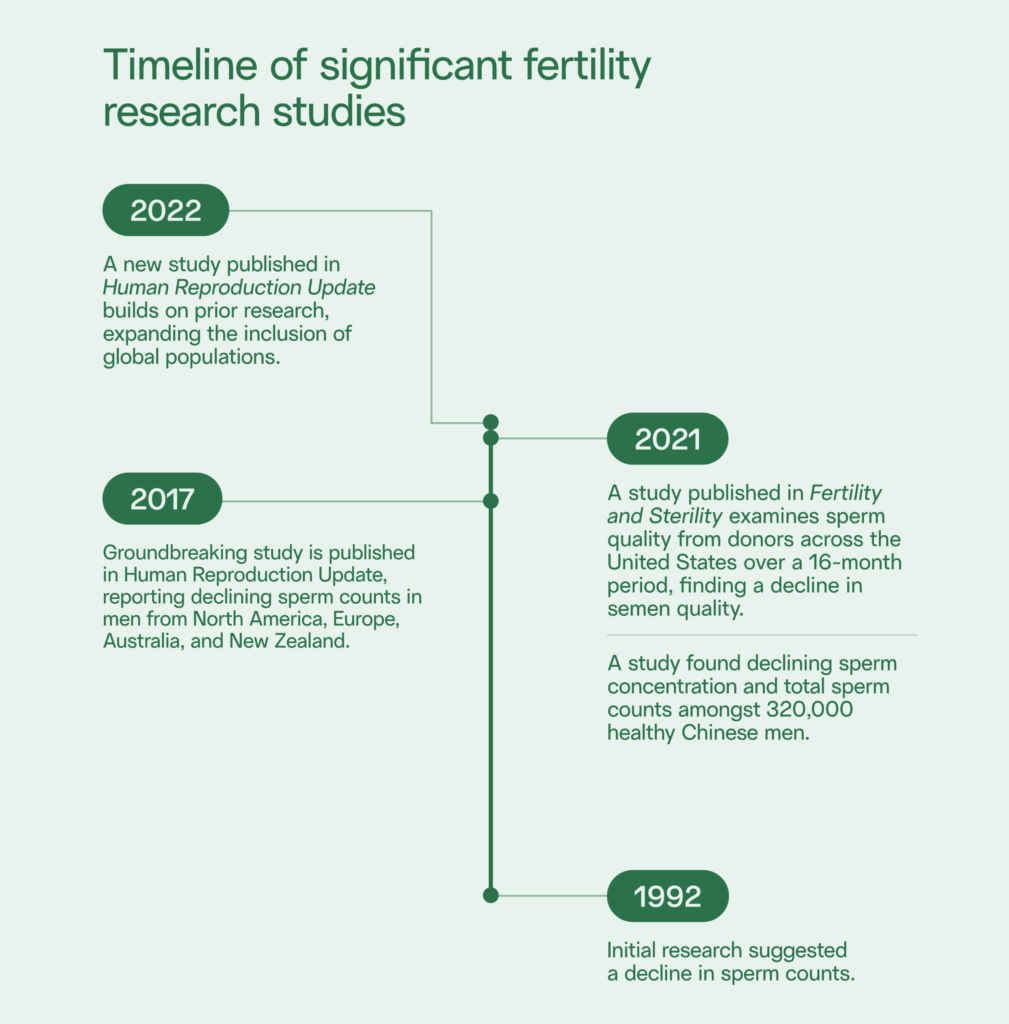
How male fertility has changed over time
The fall in testosterone levels mirrors other declines in male fertility health — namely reduced sperm count and quality. A 2021 study found widespread declines in sperm concentration and motility over a 16-year period.5 Another meta-analysis from 2022 examined 223 studies covering semen samples collected between 1973 and 2018, and found that not only were sperm counts declining globally, but the decline appeared to be accelerating after the year 2000.6
All of these fertility declines are likely related to similar causes. Increased exposure to environmental toxins and lifestyle factors like obesity, smoking, poor diet, alcohol use, and stress may all affect sperm production and hormone levels. These lifestyle factors, alone and in combination, may potentially be contributing to decreased male fertility over time.
Want to understand your fertility health? Start with a semen analysis.
What this means for you
Low testosterone is on the rise. This may mean you’re more likely to experience symptoms of low testosterone, such as low sex drive, erectile dysfunction, weight gain or inability to gain muscle, or even depression.
Many men, even young men, who are dealing with low T look to testosterone replacement therapy (TRT) as a solution. While TRT can address the symptoms of low testosterone and help men feel better, it can also shut off sperm production, even long-term.
See our guide to testosterone replacement therapy & male fertility.
References
- 1. Lokeshwar et al, “Decline in Serum Testosterone Levels Among Adolescent and Young Adult Men in the USA.” 2021.
- 2. Andersson et al, “Secular Decline in Male Testosterone and Sex Hormone Binding Globulin Serum Levels in Danish Population Surveys.” 2007.
- 3. Jeng, “Exposure to Endocrine Disrupting Chemicals and Male Reproductive Health.” 2014.
- 4. Bassil et al, “The benefits and risks of testosterone replacement therapy: a review.” 2009.
- 5. Canon et al, “SIXTEEN YEAR LONGITUDINAL STUDY OF U.S. SPERM DONORS CONTINUES TO DEMONSTRATE DECLINING SPERM COUNT AND MOTILITY.” 2021.
- 6. Levine et al, “Temporal trends in sperm count: a systematic review and meta-regression analysis of samples collected globally in the 20th and 21st centuries.” 2023.

